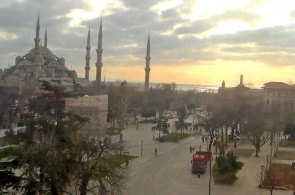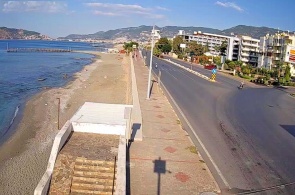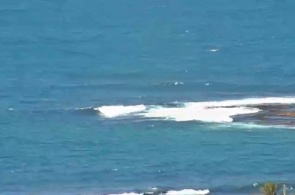One of the largest cities inBosnia and Herzegovina– Mostar, has become one of the main tourist, historical and cultural centers of the country. The city is conditionally divided into two parts – Muslim and Catholic, between which passes the river Neretva. This multi-ethnic culture of the city undoubtedly reflected in his appearance. EastMostargives numerous mosques and markets that were built during the Ottoman rulers. Christianity came to the city during the Renaissance, together with the Austro-Hungarian rulers. The Catholic part of town has architecture of Western Europe and the Mediterranean, which gives them a more modern flavor. In the city there is a large number of attractions that will acquaint you with rich and long history of this picturesque area. It should be noted that the location of Mostar is very compact, so you can easily and quickly go from one monument to another without wasting much time on transport. One of the main attractions of the city and its symbol is the Old bridge, built in the XVI century and has a graceful, airy design, due to the sleek high-arch of light-colored stone. An interesting fact is that the city name is translated as "Guardian of the bridge". Unfortunately, the original building was destroyed in the late twentieth century. Modern copy of the Old bridge was built in this century. A reminder of the terrible siege of 1993 is a stone with the fragment mines and a commemorative inscription. The bridge is on the list of world heritage of UNESCO. On both banks of the river rise two ancient towers – Tara and Halebija, where for centuries housed the military warehouses. One of the most interesting sights of Mostar is the Central market Kuyundzhiluk where you can lose your head from the motley variety of Souvenirs, Antiques, old art paintings and fine Oriental sweets. In the left Bank district of Mostar has a large number of Eastern churches that represent unique works of Turkish architects. The best sample of the cult Muslim architecture are the mosque, Hadzi-Kurt and Cargobay, erected in the middle of the XVI century, as well as looking into the emerald waters of the Neretva river mosque, Koski Mehmed-Pasha mosque, with stunning interiors and painted tallest minaret, where there is an observation deck. Also of interest is the tower Sahat-Kula, a clock, and gigantic bell and the great house of Biscevica with luxurious Turkish interiors.
More details
popular camerasshow all
Sultanahmet or Blue mosque is a work of art of Turkish-Islamic architecture. Its construction began in 1609, the construction work took seven years to a 19-year-old Sultan. The name of the mosque was, due to its interesting and unique finish.
Istanbul, Turkey
Stavanger, a town in the commune of Norway, located in the South-Western part of the country, on the Peninsula, rich in minerals. Tanager combines the influence of foreign organisations such as NATO and oil companies. The camera will shoot the harbour and the promenade of the city.
Stavanger, Norway
A webcam broadcasts the district of Tosmur - quiet location in the Eastern part of Alanya, located only five kilometres from the city centre. Its rural way of life and the beauty of untouched nature attract tourists.
Alanya, Turkey
Shark Island or in English of Shark island, located in the harbour city of Sydney, the suburb of Point Piper. The locals, the natives named the island Boambilly, which translated means Shark island. After all, this name is not casual, because it's mean and looks like a shark fin.
Sydney, Australia
The webcam is installed on site Alva. Tsaghkadzor ski resort town in Armenia. Tsaghkadzor is a beautiful mountainous area among deciduous forests, with a pleasant winter climate, and clean fresh air. The highest point is 1800 meters. The truss type is a classic, divided into three.
Tsakhkadzor, Armenia






